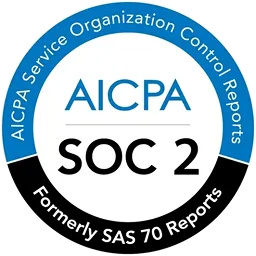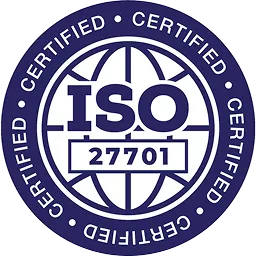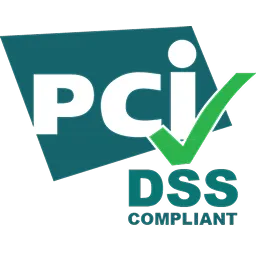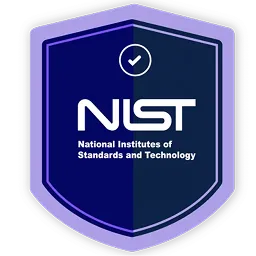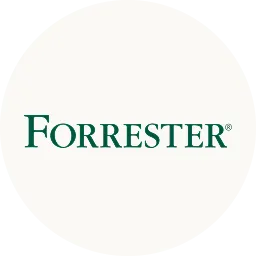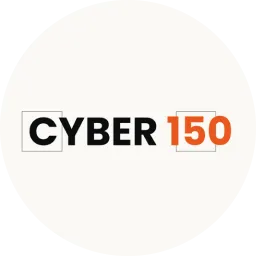As an IT manager, managing SaaS users efficiently has become crucial. This is mainly due to an increase in SaaS adoption. Therefore, maintaining a centralized system for managing SaaS users becomes paramount. SaaS user management is not merely a technical necessity but a strategic imperative. This ensures seamless workflow, security, and optimal resource utilization.
Picture a seamless orchestration where user access, permissions, authentication, and levels of access seamlessly synchronize, bolstering not only security but also user experience.
This article delves into the heart of SaaS user management, uncovering the intricacies that empower you to refine workflows, enhance security layers, and elevate overall organizational efficiency.
What is SaaS User Management?
SaaS user management encapsulates overseeing the entire spectrum of user interactions with software applications, encompassing onboarding, role definition, permission regulation, and ensuring secure access and data integrity throughout the user journey.
Centralizing these processes enhances security, streamlines workflows, and ultimately enhances the overall user experience.
Imagine a cloud-based project management SaaS solution: an IT manager efficiently manages user access by assigning roles such as 'Project Manager,' 'Team Member,' or 'Viewer,' each with tailored permissions. For instance, project managers have full access to project details, while team members have restricted access to specific tasks.
Collecting insights on SaaS usage within the company involves several facets:
- Identifying the number of applications used
- Managing employee access to these applications
- Defining permissions within each application
- Monitoring active application usage
- Ensuring user satisfaction with provided applications
- Facilitating access to new apps when required
- Overseeing unauthorized sign-ups for new apps
- Ensuring proper user offboarding processes
Importance of SaaS User Management
SaaS user management is of immense importance to IT teams, primarily in maintaining records of employee app access. While this data is scattered across individual app admin accounts, a centralized dashboard is often missing.
Typically managed through spreadsheets, this database aids in monitoring app provisioning and combating SaaS sprawl. Let's delve into its benefits:
1. Security and Access Control:
- Authentication: User management involves robust authentication mechanisms to verify the identity of users accessing the SaaS application. This could include password-based, multi-factor authentication, or biometric methods.
- Authorization: Once authenticated, user management systems control what each user can access or modify within the application. Role-based access control (RBAC) or attribute-based access control (ABAC) systems ensure users only have permissions necessary for their roles.
2. User Experience Enhancement:
- Account Management: User management simplifies account creation, modification, and deletion processes. This streamlines user experiences and makes it easy for users to maintain their profiles, passwords, and preferences.
- Self-Service Capabilities: Providing users with self-service options for password resets, profile updates, and subscription management reduces dependency on support teams and empowers users.
3. Scalability and Performance:
- Efficient Onboarding: A scalable user management system facilitates the smooth onboarding of new users or customers. Automation in user provisioning ensures that as the user base grows, the system can handle new entries without performance degradation.
- Load Management: Handling user authentication and authorization efficiently ensures the SaaS application maintains performance even during high traffic or user spikes.
4. Data Integrity and Compliance:
- Data Protection: User management includes mechanisms to safeguard sensitive data. This involves encrypting user credentials, implementing secure transmission protocols (like HTTPS), and adhering to data protection standards.
- Compliance Adherence: User management systems help enforce industry-specific regulations (such as GDPR and HIPAA) by controlling access to sensitive data and maintaining audit trails for compliance checks.
5. Analytics and Business Insights:
- User Behavior Analysis: User management systems can track user activity, providing valuable insights into user behavior, feature usage, and engagement patterns. This data aids in making informed decisions for product enhancements or optimizations.
- Personalization and Targeting: Understanding user preferences through analytics allows for personalized experiences and targeted marketing or product offerings.
6. Operational Efficiency and Cost Savings:
- Automation: Automated user management processes, such as provisioning and de-provisioning accounts, reduce the workload on IT support teams and minimize the potential for human errors.
- Cost-effective Scaling: Efficient user management contributes to cost savings by allowing the SaaS provider to scale services without incurring substantial administrative overheads.In summary, robust SaaS user management is essential for ensuring security, enhancing user experiences, enabling scalability, maintaining data integrity, meeting compliance standards, leveraging analytics, and driving operational efficiency, all of which are critical for the success of a SaaS offering.
Challenges with SaaS User Management
Despite its many advantages, SaaS user management comes with its set of challenges. Here are some common hurdles:
1. Security Risks:
- Data Breaches: Managing user credentials and sensitive data can be prone to breaches if not handled securely. Weak authentication methods or improper data encryption may lead to unauthorized access.
- Identity Theft: If user authentication is compromised, it could lead to identity theft or unauthorized usage of accounts, potentially damaging both users and the SaaS provider.
2. Complexity in Access Control:
- Role Management: As the user base grows, managing and assigning roles becomes more complex. Balancing granular access control with usability can be challenging.
- Privilege Escalation: Incorrectly configured access controls or vulnerabilities might allow users to elevate their privileges, accessing data or functionalities they shouldn’t have.
3. User Experience and Adoption:
- Complexity in Onboarding: Cumbersome registration or account setup processes can deter new users from adopting the SaaS solution.
- Password Fatigue: Users dealing with multiple SaaS applications may suffer from password fatigue, leading to poor password practices or forgotten passwords.
4. Compliance and Regulatory Challenges:
- Meeting Diverse Regulations: Adhering to various data protection and privacy regulations across different regions or industries adds complexity. Ensuring compliance with GDPR, HIPAA, or other standards requires meticulous user data management.
5. Scalability and Performance:
- Scalability Issues: As the user base expands, the infrastructure supporting user management might struggle to scale seamlessly, causing performance bottlenecks.
- Latency and Access Delays: Heavy authentication processes or complex access control mechanisms can introduce latency, affecting user experience.
6. Maintenance and Integration:
- Integration Complexity: Integrating user management systems with existing enterprise systems or third-party applications can be challenging, leading to data silos or compatibility issues.
- Maintenance Overheads: Regular maintenance and updates to user management systems to address security vulnerabilities or add new features require resources and can disrupt services if not managed properly.
7. Data Loss and Recovery:
- Loss of User Data: Inadequate backup mechanisms or errors in user data management can lead to the loss of critical user information, affecting user trust and causing data recovery challenges.
8. User Privacy Concerns:
- Privacy Protection: Balancing data collection for user analytics while respecting user privacy preferences poses a challenge. Users expect their data to be handled responsibly.To overcome these challenges, SaaS providers often invest in robust security measures, user-friendly authentication methods, regular audits for compliance, seamless scalability strategies, user education for best practices, and continuous improvement in user management systems. Collaboration between security experts, developers, and user experience designers is crucial to address these challenges effectively.
Why Should You Use a SaaS User Management Platform
Using a SaaS user management platform offers several advantages for businesses and organizations:
1. Centralized User Control:
- Single Interface: It provides a centralized dashboard or interface to manage user access and permissions across multiple SaaS applications. This simplifies administration and ensures consistency in user management practices.
2. Enhanced Security:
- Strong Authentication: Implements robust authentication mechanisms like multi-factor authentication (MFA) or single sign-on (SSO) to bolster security and prevent unauthorized access.
- Access Control: Enables granular control over user permissions, ensuring users have appropriate access levels to SaaS tools based on their roles and responsibilities.
3. Simplified Onboarding and Offboarding:
- Efficient User Provisioning: Streamlines the process of adding new users to SaaS applications, automating account creation, and assigning necessary permissions.
- User De-Provisioning: Automates the removal of access and accounts for departing employees, reducing the risk of lingering access and potential security threats.
4. Compliance and Governance:
- Regulatory Compliance: Helps enforce compliance with industry standards and regulations by managing access controls, tracking user activity, and maintaining audit logs for compliance purposes.
- Policy Enforcement: Implements and enforces security policies and best practices uniformly across all SaaS applications, reducing the risk of policy violations.
5. Cost Efficiency:
- Optimized License Management: Provides insights into SaaS usage, enabling organizations to identify underutilized licenses, eliminate redundancies, and optimize subscription costs.
- Usage Analytics: Offers user activity and application usage data, aiding in informed decision-making regarding subscription renewals or downsizing.
6. Scalability and Flexibility:
- Adaptability: Scales with the organization's growth, supporting the addition of new users and applications without compromising efficiency or security.
- Integration Capabilities: Integrates seamlessly with various SaaS applications and existing IT infrastructure, ensuring compatibility and smooth operations.
7. Improved User Experience:
- Self-Service Capabilities: Empowers users with self-service options for managing their accounts, resetting passwords, or modifying personal information, enhancing user satisfaction, and reducing support tickets.
8. Data Consolidation and Insights:
- Consolidated Data View: Provides a unified view of user-related data and activity across multiple SaaS platforms, facilitating better analytics and insights for decision-making As small companies grow, managing user records in spreadsheets becomes increasingly cumbersome and error-prone. What may work for a team of fewer than 25 employees becomes impractical for larger organizations with 500+ employees using multiple applications.
- Enter the solution: a SaaS management tool. This robust user management system eliminates the complexities of manual record-keeping. It streamlines processes and provides an automated system of record, freeing up valuable time for organizations to focus on core business functions.
- With this platform in place, managing user roles, licenses, renewals, and usage analytics becomes effortless. It ensures an organization's seamless and efficient SaaS ecosystem, offering scalability, automation, enhanced security, compliance adherence, cost optimization, and streamlined operations. Ultimately, it replaces the limitations of manual spreadsheet management, aligning perfectly with the needs of a growing business.
Benefits of Using a SaaS Management System
Using a SaaS management system offers numerous advantages for businesses:
1. Centralized Visibility:
- Application Inventory: Provides a centralized view of all subscribed SaaS applications, facilitating better tracking, management, and optimization of software usage.
- Unified Dashboard: Offers a single dashboard to oversee multiple applications, enabling better decision-making based on comprehensive insights.
2. Cost Optimization:
- Usage Analytics: Helps identify underutilized licenses or redundant subscriptions, allowing businesses to optimize costs by adjusting or eliminating unnecessary software expenses.
- Renewal Management: Streamlines subscription renewals and license management, ensuring efficient use of resources and avoiding unnecessary expenditures.
3. Enhanced Security and Compliance:
- Access Control: Enables better control over user access and permissions, reducing the risk of unauthorized access and data breaches.
- Compliance Management: Helps enforce security protocols and ensures adherence to regulatory standards, reducing compliance-related risks.
4. Streamlined Operations:
- Automation of Tasks: Automates manual processes like user onboarding, offboarding, and access provisioning, reducing administrative burden and minimizing errors.
- Integration Capabilities: Integrates seamlessly with other systems, streamlining workflows and ensuring data consistency across platforms.
5. Scalability and Flexibility:
- Support for Growth: Scales according to business needs, accommodating changes in user numbers, applications, and operational requirements.
- Adaptability: Offers flexibility to add or remove applications and users easily as the business evolves.
6. Improved User Experience:
- Self-Service Capabilities: Empowers users with self-service options for managing their accounts, reducing dependency on IT support, and enhancing user satisfaction.
- Seamless User Experience: Ensures users a consistent and seamless experience across different SaaS applications.
7. Data-Driven Decision Making:
- Insights and Reporting: Provides valuable data and analytics on software usage and user behavior, enabling data-driven decisions to optimize resources and improve productivity.
8. Vendor Management:
- Performance Evaluation: Assists in evaluating vendor performance, ensuring that subscribed services align with business objectives and provide value.A SaaS management system offers centralized control, cost savings, security enhancements, streamlined operations, scalability, and valuable insights, empowering businesses to manage their SaaS ecosystem efficiently while focusing on core objectives and growth.
SaaS User Management Best Practices
Here are some best practices for managing users within a SaaS environment:
- Role-Based Access Control (RBAC): Implement RBAC to assign specific roles to users based on their responsibilities. This ensures that users have appropriate access privileges aligned with their job functions.
- Strong Authentication and Authorization: Utilize strong authentication methods like multi-factor authentication (MFA) to enhance security. Combine this with robust authorization mechanisms to control user access to different functionalities within the SaaS application.
- Regular User Access Reviews: Conduct periodic reviews of user access rights to ensure they align with current job roles. Remove unnecessary permissions or access for users who no longer require them.
- Automated Onboarding and Offboarding: Implement automated processes for onboarding new users and offboarding departing employees. This ensures timely provisioning and de-provisioning of access, reducing the risk of unauthorized access.
- Centralized User Management: Use a centralized user management system or directory to maintain a single source of truth for user data. This helps maintain consistency and reduce discrepancies across different applications.
- Security Training and Awareness: Provide regular training to users on security best practices, such as password hygiene, recognizing phishing attempts, and safeguarding sensitive information. Awareness reduces the likelihood of security incidents.
- Monitoring and Logging: Implement logging and monitoring systems to track user activity within the SaaS application. This helps in detecting anomalies or suspicious behavior for timely intervention.
- Data Encryption and Protection: Employ encryption mechanisms to protect sensitive data stored within the SaaS application. Additionally, enforce data access controls to limit access to authorized personnel only.
- Regular Updates and Patching: Ensure the SaaS application and its associated user management systems are up-to-date with the latest security patches and updates to mitigate vulnerabilities.
- Compliance Adherence: Stay updated with relevant industry regulations and ensure user management practices align with compliance standards such as GDPR, HIPAA, or other applicable regulations.
- Regular Audits and Assessments: Conduct periodic security audits and assessments to evaluate the effectiveness of user management practices, identify potential weaknesses, and implement improvements.
- Backup and Recovery Mechanisms: Establish backup and recovery mechanisms for user data and access configurations to mitigate the risk of data loss or system failures.By implementing these best practices, organizations can establish a robust and secure user management framework within their SaaS environment, ensuring efficient operations, enhanced security, and compliance adherence.
How Can Zluri Help With SaaS User Management?
Zluri is a comprehensive SaaS management platform designed to offer multifaceted support for SaaS user management, addressing various complexities and challenges within a SaaS ecosystem:
- Centralized User Visibility: Zluri provides a unified dashboard presenting a complete overview of user accounts and access privileges across multiple SaaS applications. This centralized view allows administrators to manage users efficiently without toggling between different platforms.
In fact, Zluri has been named in the Gartner® Report: Reduce Your IAM Attack Surface Using Visibility, Observability, and Remediation. Download now!
Gartner, Reduce Your IAM Attack Surface Using Visibility, Observability, and Remediation, Rebecca Archambault, 8 October 2025
Gartner is a trademark of Gartner, Inc. and/or its affiliates.
Gartner does not endorse any company, vendor, product or service depicted in its publications, and does not advise technology users to select only those vendors with the highest ratings or other designation. Gartner publications consist of the opinions of Gartner’s business and technology insights organization and should not be construed as statements of fact. Gartner disclaims all warranties, expressed or implied, with respect to this publication, including any warranties of merchantability or fitness for a particular purpose.
- Automated Onboarding and Offboarding: Streamlining the onboarding and offboarding process is critical. Zluri automates these processes, ensuring swift provisioning of access for new employees and seamless deactivation of access when employees leave. This reduces the risk of security breaches due to lingering user accounts.
- Role-Based Access Control (RBAC) and Permissions: RBAC is pivotal in ensuring users have appropriate access levels. Zluri facilitates assigning and managing user roles and permissions across diverse SaaS tools, allowing administrators to granularly control access without the hassle of manual configurations.
- Cost Optimization and Usage Insights: Zluri provides insights into SaaS usage patterns, offering data on license utilization and user activity. This information helps organizations identify underutilized licenses or subscriptions, optimizing costs by reallocating resources where needed.
- Security and Compliance Adherence: Zluri assists in enforcing security policies and compliance standards across SaaS applications. It aids in managing access controls, tracking user activity, and generating reports for compliance audits, ensuring adherence to industry regulations.
- Integration Capabilities: Integration is crucial for seamless operations. Zluri integrates with various SaaS applications and existing IT infrastructure, enabling smooth workflows, data synchronization, and centralized management without the need for extensive manual configurations.
- Enhanced User Experience and Self-Service Options: Zluri empowers users by offering self-service capabilities. Users can manage their accounts, reset passwords, or access applications efficiently without relying extensively on IT support, enhancing user satisfaction.
- Data Analytics and Reporting: Zluri provides analytics and reporting functionalities, offering valuable insights into user behavior, application usage, and license utilization. These insights aid in informed decision-making for optimizing SaaS operations.
- Scalability and Vendor Management: Zluri supports organizational growth by scaling with the addition of new users and applications. Additionally, Zluri’s vendor management capabilities help evaluate vendor performance, providing visibility into vendor usage and metrics to optimize vendor selections.Overall, Zluri acts as a comprehensive solution, addressing the complexities of SaaS user management by centralizing control, automating processes, enhancing security, optimizing costs, and offering actionable insights, thereby optimizing the overall SaaS ecosystem for businesses.Transform your user management in SaaS apps with Zluri – your key to a more efficient, cost-effective, and streamlined IT ecosystem. Book a Demo to understand Zluri’s SaaS user management.
FAQs
How does SaaS user management impact data security?
Maintaining a clear understanding of your company's cloud capabilities is paramount. Organizations expose themselves to potential security risks like cyber threats without proper visibility. Cybersecurity risks, such as unauthorized access to cloud computing accounts—frequently manifested through ransomware attacks—pose a significant security threat, highlighting the critical importance of complete visibility and management of cloud services.
Does user management enable a personalized user experience?
The system takes charge of personalization, seamlessly configured to recognize users and provide tailored data, experiences, or features aligned with their roles. This curated, personalized experience is crafted by analyzing user characteristics, behaviors, and attributes, ensuring the delivery of valuable and relevant content for each individual.
What tools or software can assist in effective SaaS user management?
Below are a few user management tools that can help you in effective SaaS user management.
- Zluri
- BetterCloud
- Productiv
- Zylo
- Ampliphae
- Basaas
What is SaaS user account management?
Securing your IT system demands a comprehensive comprehension of the individuals involved and their respective levels of resource access. Effectively handling user accounts revolves around controlling the authorization of users to specific folders and files. This entails furnishing precise access credentials to individuals requiring privileged access.
What are the best practices for SaaS account management?
Here are some of the SaaS user account management best practices to optimize your strategy:
- Customer-Centric Approach: Prioritize understanding your customer's needs and goals. Tailor your SaaS solution to address their unique challenges and continuously seek feedback for refinement.
- Proactive Communication: Establish clear communication channels. Regularly update clients on product enhancements, industry trends, and any potential disruptions.
- Personalized Onboarding: Craft a seamless onboarding process to guide clients through your SaaS platform. Customize training sessions based on their proficiency level to ensure a smooth and confident start.
- Data-Driven Decision-Making: Leverage analytics and data insights to understand user behavior, identify opportunities for improvement, and showcase the tangible value your SaaS solution brings to the client's business.
- Renewal Planning: Approach renewals strategically. Anticipate and address concerns before they arise, demonstrating the ongoing value of your SaaS solution. Make the renewal process as seamless as possible to solidify long-term partnerships.









.svg)



